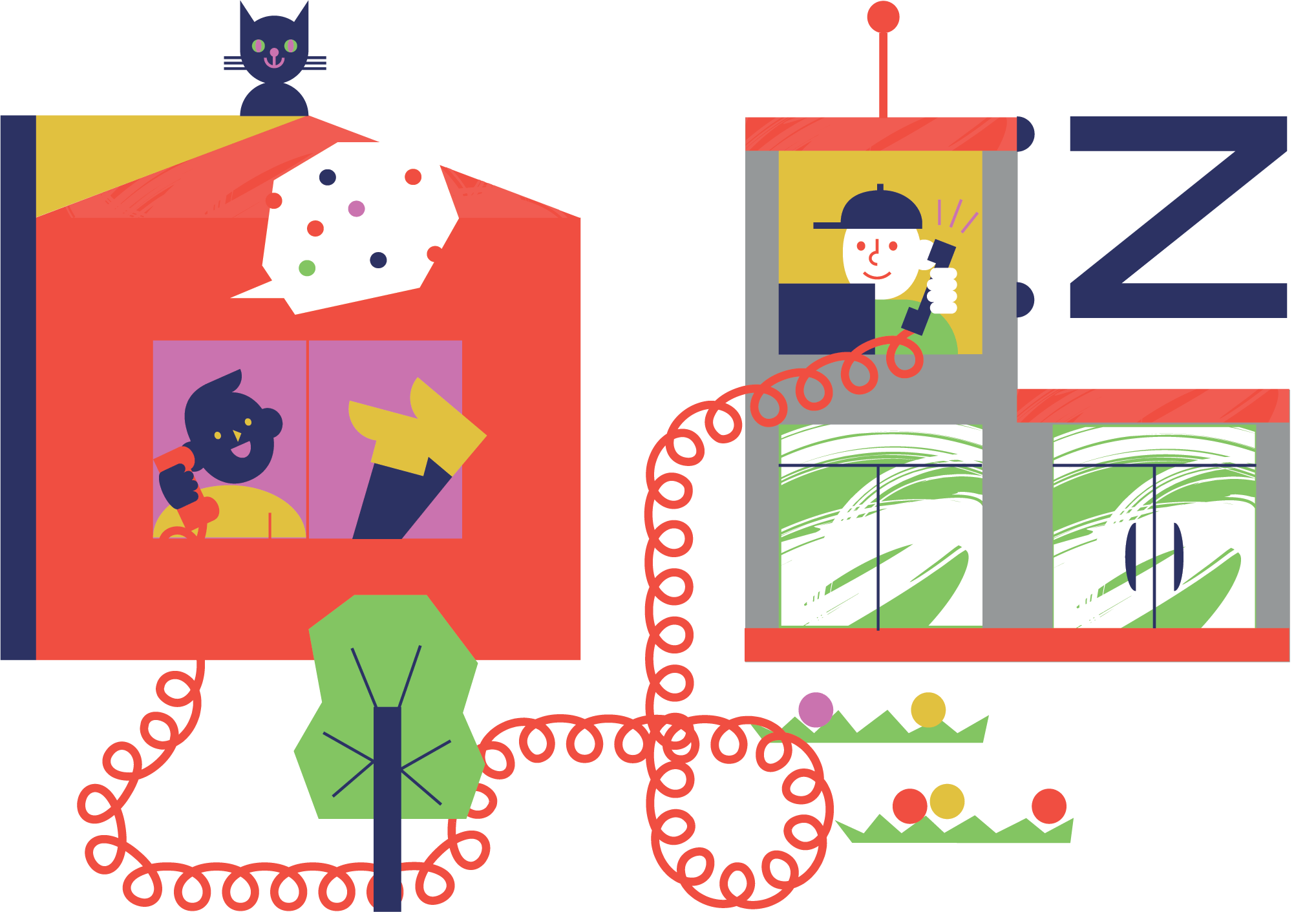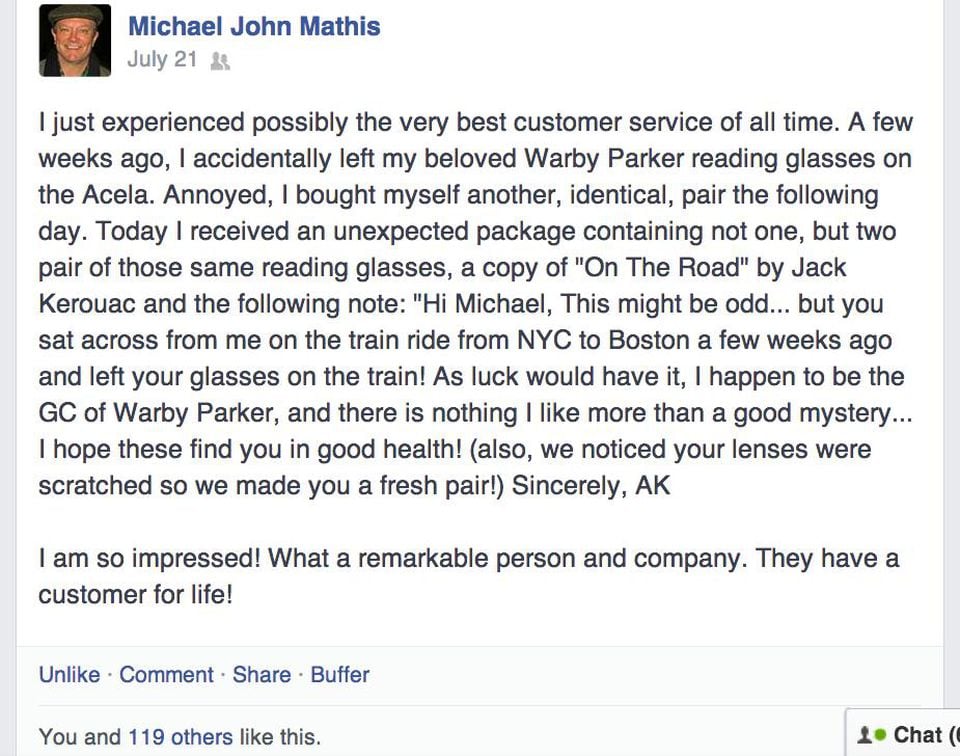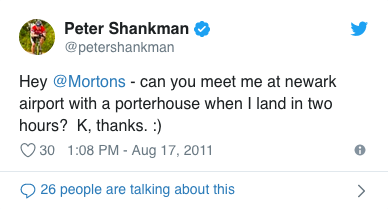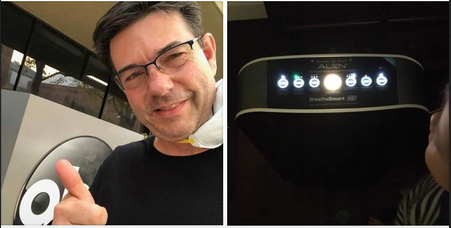Zappos and the Path
to Customer Happiness
Zappos.com has a well-earned reputation as a true leader in ecommerce customer service. Thanks to CEO Tony Hsieh, the company is a dominant force in the online footwear and apparel market, gaining even more steam following its acquisition by Amazon.com for $1.2 billion in 2009.

Hsieh is a widely recognized thought leader in business strategy who truly lives his beliefs. After moving Zappos headquarters to downtown Las Vegas, he launched an experiment in urban living by creating a park with vintage Airstream trailer homes and tiny houses on a one-acre lot near the campus, dubbed Llamapolis, where he still lives (along with his Alpacas, Marley and Triton). When asked about his reasons for creating the park, Hsieh explained he did it because he “wanted to maximize serendipity and randomness” in his life, a phrase that could just as well describe the Zappos philosophy of delivering happiness by surprising customers.

Delivering WOW Through Amazing Customer Service — The Zappos Way
So how do they do it? In his 2009 book, Delivering Happiness: A Path to Profits, Passion, and Purpose, Hsieh distills the formula for Zappos success down to a single word: culture. More specifically, a culture of happiness that is built on a mission to make everyone — customers and employees alike — happy. By focusing first and foremost on following their passion and spreading happiness, Hsieh believes companies can create customer experiences that build phenomenal brand loyalty, simply because customers are genuinely happy to engage with the brand.
At Zappos, the Customer Loyalty Team takes point in the mission to “deliver WOW through service” to their customer base. Numbering 600 strong, they handle up to 10,000 contacts per day (split between email, chat, and phone), with the phone team handling a significant portion of that volume. The efforts taken by Zappos Customer Loyalty Team members in their quest to make customers happy are nothing short of heroic. I’ve selected a few cases to highlight here, but could easily have covered a dozen other examples — and that’s just choosing from the most frequently cited examples. That just how good this team is. Customers have been singing their praises for over a decade, and there’s no sign that they’re slowing down.
In return, the team receives generous perks and compensation, and each employee has the ability to give up a $50 “co-worker bonus award” on a monthly basis. That’s in addition to an amazing campus designed to follow Hsieh’s preference for “serendipity and randomness,” such as housing the IT department in the cafeteria. Just how amazing is the campus? Enough so that campus tours are considered a noteworthy experience in Las Vegas, a city known for having more than its fair share of tourist attractions.
Zappos Delights Customers First and Worries About Metrics Later
Call center support is the heart and soul of the Zappos Customer Loyalty Team. Anyone who has ever worked phone sales or support can likely recall instances where a supervisor jumped in with an order to speed up the script or break off the call in order to keep average handle time (AHT) low across the shift. Not the case at Zappos. While they do answer 80% of calls in under 20 seconds, and they do track similar metrics for the purpose of volume forecasting and staffing decisions, they remain fixed on the goal to “deliver WOW” by making the customer happy, no matter how long the call takes.
In fact, call handlers on the Zappos Customer Loyalty Team are empowered to spend as much time as they want on each call, with the result that there have been multiple instances where a call handler spent their entire workday (or longer) on a single call. In June 2016, Zappos Customer Loyalty Team member Stephen Weinstein talked to a customer for 10 hours and 43 minutes — a statistic likely to send most call center managers into a panic. And perhaps the best part is that it wasn’t initially a Zappo’s service call. Weinstein spent the duration of the call just informing the caller about life in the Las Vegas area, although the call did eventually lead to the sale of a pair of Ugg boots.
Weinstein’s call did set a new record of Zappos, but the prior record-holder, Shaea Labus, wasn’t all that far behind — she had a 9 hour, 37 minutes phone call with a customer in 2012. In both cases, the Zappos culture was responsible for making this happen. Not only were both team members free to spend this much time on their calls, but they received support from their colleagues in each case, with co-workers bringing food and water and offering encouragement along the way.
Both phone calls showcase one of the central tenets of the Zappos support philosophy, which holds that team members can create great experiences by just listening to what customers have to say. “When it comes to creating great experiences, the number one tool any company can use is listening,” according to Zappos culture evangelist Jon Wolske. Listening carefully to the context customers provide can open opportunities to solve an additional problem or even just respond with a moment of kindness, turning the call into “an experience rather than [a] transaction.” That philosophy is key for creating experiences that turn into compelling stories and create brand advocates for life.
Take the case of an elderly woman who ordered six pairs of shoes from Zappos, hoping to find a comfortable pair after her feet began swelling painfully due to medical procedures. Her daughter was so impressed with what happened next, she wrote her own article about how Zappos “knocked her socks off” with their kindness. The story starts when the mother called in to return the pairs she didn’t want, and the Zappos team member took the time to chat with her, learning about her medical issues. The Zappos rep happened to have similar medical concerns, and the pair bonded through conversation.
The mother called her daughter to enthuse about the call and how special it had been to her — but it didn’t stop there. A few days later, a bouquet of flowers arrived at the mother’s home, and the whole family was moved. This led to the writer’s sister contacting Zappos to tell them just how much the gesture had meant to them all, and Zappos promptly responded by granting all three women VIP accounts.
The writer summed up her family’s experience by stating “I’ve seen [Zappos] employee videos about products in which their natural, unscripted delivery, and totally average looking appearances, make me trust them…But this bouquet of flowers delivered on the vision… Wow.” This is an excellent example of how taking a few more moments to let a phone conversation develop led to an opportunity to “deliver WOW through service” and spread true happiness to multiple customers, leading to three fierce brand loyalists and a great word of mouth story that reached thousands of people.
Happiness Happens on Every Customer Service Channel At Zappos
Not every great Zappos story happens over the phone. As posted on Reddit, a customer wrote an email to the Zappos team to ask about a return and possible replacement for a pair of shoes that fell apart shortly after delivery. The Zappos rep, Paul, recognized that the customer was understandably disappointed, and also knew that the shoes were discontinued, meaning a direct replacement wasn’t possible. In order to cheer the customer up, Paul took time to write a pitch-perfect response full of wit and emotion, casting himself as a superhero named Captain Anomaly.
Staying in character throughout, Paul sent a pre-paid return shipping label and gave instructions for re-packaging the shoes for a return, then included a $15 coupon to be used towards a different pair of shoes, all before closing with a humorous but genuine apology for the inconvenience. The customer’s exact response isn’t clear from the details, but given that his friend posted the entire email directly to Reddit, it’s fair to assume that he was very happy with the outcome and shared the story with others.
But the crown jewel of Zappos customer support stories is one that really showcases what happens when employees are fully empowered to take any action necessary to deliver happiness for a customer. As told by Rob Siefker, senior director of the Zappos Customer Loyalty team, the story begins with the kind of small mixup that happens every day in many households. While packing up their home to move, a husband took care to place his wife’s jewelry into a spare purse, which he then put in what he thought was an extra Zappos box. As you might guess, the wife actually intended to return the purse to Zappos, which she did — without checking for any contents. When she started to unpack in their new home and discovered the mistake, she reached out to Zappos immediately, hoping they could intercept the package and return it to her.
The Zappos rep she talked to immediately rerouted the package directly to his desk so he could send it back to her. However, he was still concerned that there was too much room for error in shipping the jewelry back through the mail. Instead, he bought a plane ticket and hand-delivered the items back to the very grateful couple. Now that’s “delivering WOW through service” in action!
Happy, Empowered Employees Lead to Delighted, Loyal Customers
There’s a common thread through these and every other Zappos story. Tony Hsieh’s vision of an empowering culture with a mission for spreading happiness is directly manifested in the experiences that the Zappos Customer Loyalty Team create on a daily basis. That’s thanks to a simple but powerful dedication to making sure the right employees are hired to do the job. One of the lessons Hsieh took from his first company, LinkExchange, was that it’s absolutely critical to take time in the hiring process, making sure to hire people who are the right fit for the company’s culture first and foremost. Christa Foley, Culture Adviser and Director of Insight at Zappos, emphasizes the need to hire people who care about customer service first and foremost. Every candidate goes through separate technical and culture fit reviews, and if there is any question about their commitment to making customers happy and living the Zappos core values, they are dropped from consideration, no matter their technical skills or experience.
But it doesn’t stop there. If a candidate accepts an offer but begins to have doubts during the training process, Zappos will pay them to quit — a radical concept that recognizes it’s far cheaper in the long run, to eliminate a bad culture fit early on than to sink resources into training and possibly lose customers while the employee struggles to fit in. And each Customer Loyalty Team member is trained to recognize that, as the employee who is closest to the customer when they need help, they are fully empowered to take any action necessary to make that customer happy, as the examples above clearly show.
Delivering WOW Pays Dividends in Customer Loyalty
There’s no question that the Zappos approach to finding profit by pursuing passion and delivering happiness is a winner. Their fanatical customer base is only too happy to return to Zappos time and time again and are quick to evangelize about their experience with friends and family. That leaves Zappos with an astonishing retention rate of up to 75%, with as much up to 44% of new customers making their first purchase based on word of mouth recommendation from existing customers. That’s kept revenues hovering close to $1 billion for nearly a decade, even as recent experiments with radical management structures raised eyebrows in leadership circles. But there again, the company’s dedication to making customers happy first and foremost cut through the chatter, and customers continue to rave about their experiences with Zappos.
Warby Parker and Morton’s Steakhouse Empower Employees to Create Unforgettable Experiences
Other companies are also delivering on unforgettable experiences by empowering employees — Warby Parter and Morton’s Steakhouse have both seen recent buzz for amazing customer service. In order to be an exceptional, truly unforgettable experience, a customer service interaction has to deliver something that the customer never would have expected, let alone dreamed of. When this happens, there’s no doubt in the customer’s mind that the company really just wanted to see them smile more than anything else — and as you might guess, that feeling creates customers for life. Consider the case of Warby Parker executive Anjali Kumar, whose seatmate on a train journey left behind a pair of Warby Parker reading glasses. Kumar took the glasses and was able to match them with the customer’s order for a replacement pair. When the customer opened their new glasses, they were stunned to find their original pair (with new lenses) and a copy of Jack Kerouac’s On The Road included as well, along with a note directly from Kumar explaining how it all came together. The customer took to Facebook to share the experience, and the story went viral.

Then there’s the story of author and customer service guru Peter Shankman, who found himself getting hungry while waiting at an airport several years ago. On a whim, he Tweeted his favorite steakhouse: “Hey @Mortons — can you meet me at newark airport with a porterhouse when I land in two hours? K, thanks. :)”

To his absolute surprise, a tuxedoed Morton’s employee showed up at the airport a short while later with a porterhouse and a full complement of sides, having driven 23 miles to deliver his favorite meal.
Both stories are great examples of the kind of good vibes that are generated when a company delivers extraordinary service just to show they really do care about taking care of customers to the fullest extent possible. Kumar had no way of knowing that the customer would take to social media to share their story and generate positive buzz. Her determination to match the customer with their glasses and include a few surprises came from a genuine desire to do something fun that would delight a particular customer. And there’s no doubt that Shankman was delighted with Morton’s service, which highlights a keen social media program that was able to pick up on his comment, then tap into an employee network that was empowered to do something unique.
Alen Air Purifiers Delivers Safety and Happiness in the Middle of a Crisis
It’s tempting to wonder how the Zappos model of listening to customers and empowering employees to take extraordinary measures fares outside of an extremely profitable megacorporation. Can smaller companies still deliver moments where extraordinary experiences can — or perhaps need to — happen, without the expense accounts and seemingly limitless resources?
The answer is a resounding “yes.” That’s because supporting a mission of empowering people and prioritizing customer happiness isn’t simply a profit vs loss question — it’s sometimes just the right thing to do. During the recent wildfires that devastated southern California, social media feeds everywhere overflowed with examples of heroism and selflessness on the part of friends, neighbors, and first-responders.
One amazing story that surfaced on Reddit involved unexpected heroism from a man named Mark Caddell, VP of Sales and Customer Relations at Alen Air Purifiers, who manufacture several models designed to filter out particulates common to wildfire smoke. It seems that a family in California had purchased one of these units to help clean the air in their home and make it safer for their young son, but the company explained that their delivery was stuck in the UPS system due to the wildfires.
But before they knew it, Mark reached out to them by phone to express his own concern for families needing their products in California and gave them a personal commitment to wards getting the unit delivered. The next afternoon, Mark responded to one of their texts with a picture of an airplane wing — that’s right, he was en route from his home in Texas to hand-deliver a unit to them. And it doesn’t stop there — when he landed, Mark offered to pick up a meal from In-N-Out Burger to top off the experience.

The family was understandably blown away by Mark’s incredible effort and obvious sincerity, and contacted a local ABC affiliate, who quickly got Mark in front of a camera to share his story. From there, they asked friends and family to take to social media to boost their signal and share good vibes about Mark and Alen.
There’s no doubt that Mark acted here as a person first and foremost. He recognized the parents were concerned about their child’s health and desperate for a solution. He also recognized that he was in a unique position to do something extraordinary to solve their problem, delivering both happiness and safety (and cheeseburgers) in the process. It wasn’t the only option available to him — he could have contracted a different shipping service, provided immediate refunds or even free units, and stuck to posting his best wishes for those near the wildfires on social media. Instead, he chose to take significant personal action, and it paid off with an incredible story of exceptional dedication to customer service.
Cotopaxi Makes Gear for Good a Cornerstone of Service Excellence
Tony Hsieh’s philosophy of following personal passions and spreading happiness before profitability continues to resonate through the startup world. Many companies are also recognizing that they can make customers happy not just by solving problems for them, but also by spreading happiness to other people through the power of social good — such as revenue sharing, supporting local suppliers and using sustainable materials, or dedicating time and money to helping people in need. In closing this section, I’d like to share a personal story about a company that did both and earned a dedicated customer and brand evangelist as a result.
A couple of years ago, I learned about then-new outdoor gear supplier Cotopaxi (the name comes from a mountain peak in the Ecuadorian Andes). I was initially drawn in by their colorful designs and the eye-catching image of a llama that serves as their icon, but I was even more intrigued when I learned that they donate 2% of their revenue to organizations fighting poverty around the world. In other words, they really do live up to their motto of “Gear For Good.”
A few weeks later, I placed an order with Cotopaxi during a Black Friday sale for a new backpack for myself, and a sweater for my wife (a Christmas present). Knowing how busy the holiday season is, and that the company was relatively new at the time, I wasn’t surprised when there was a brief delay in shipping. But I eventually began to be a little concerned when no shipping notice arrived, so I reached out to their support team with a brief email inquiry. I noted that as a customer support manager with an ecommerce company at the time, I understood how frantic things could be during the holiday season.
I received a friendly and detailed response back in just a few minutes. As it turned out, they had already tried to contact me by email with an update — their sale had been so successful that they sold out of the color of the sweatshirt I had ordered and they were offering a refund or a replacement in a different color. After checking my spam folder (sure enough, there was the first email), I wrote back a few hours later to pick a different color. I received another prompt and apologetic reply — stocks were dwindling fast, and they had sold out of that color as well.
Again, the offer stood — I could take the last color available, or they would be happy to process a quick refund. With Christmas bearing down and no gift yet available for my wife, I decided to have them ship the sweater that they had in stock, feeling sure my wife would still be happy with the color. I received shipping confirmation soon after and felt confident everything would go smoothly, thanks to their great customer service.
When the package arrived, I was in for a surprise. In addition to the backpack and sweater, the Cotopaxi rep had included a stocking cap, a llama icon decal, and a handmade tree ornament in the shape of a llama, as well as a note apologizing for not being able to send the color that was originally ordered. I was hooked, and the deal was sealed when my wife loved her sweater. I promptly put the llama decal on my truck and ordered another sweater and backpack, the first of several repeat purchases. And when neighbors stop and ask me “what’s the deal with the llama on your truck,” I’m always excited to evangelize on behalf of the brand, knowing that I can recommend their customer experience with confidence.
of a Consistently Excellent
Experience